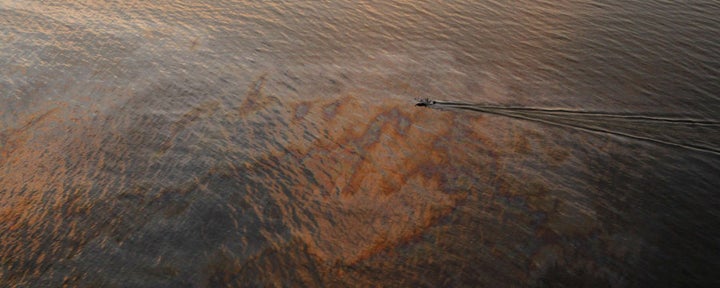
Researchers testing the waters off Louisiana in June found hugely elevated levels of polycyclic aromatic hydrocarbons, or PAHs, some of which are known carcinogens.
The researchers from Oregon State University say that a device taking samples just off the shore of Louisiana's Grande Isle registered a 40-fold increase in PAHs between May and June.
What's worse is that the sampling device was specifically designed to measure the fraction of PAHs in the environment that could make their way through a biological membrane.
"This is a measure of what would enter into an organism," said Kim Anderson, an OSU professor of environmental and molecular toxicology.
"There was a huge increase of PAHs that are bio-available to the organisms -- and that means they can essentially be uptaken by organisms throughout the food chain."
Anderson said that water samples taken off the Mississippi, Alabama and Florida coasts -- as well as air samples taken along the coast -- also showed elevated levels of PAHs, but not nearly of the same magnitude.
Samples from July were lost; Anderson is now testing samples taken in August. The operative question is how many of the PAHs have biodegraded in the interim. BP's blowout sent somewhere between 4 and 5 million barrels of oil into the Gulf's waters between April 20 and July 15.
PAHs are a class of more than 100 hydrocarbon pollutants; 17 get particular attention because exposure can have harmful health effects.
Anderson said that almost every one of those 17 particularly toxic compounds experienced the 40-fold increase that the entire class did.
"This would be the largest PAH change I've seen in over a decade of doing this," she told HuffPost.
Anderson said different organisms -- be they plankton, fish, shellfish or humans -- have different exposure risks to PAHs in the water; and they also have different capacities to metabolize the PAHs.
So just how many of these toxic compounds actually ended up in the food chain was beyond her area of research, she said.
She did not issue any warning to consumers, noting: "The USDA is testing the seafood and I would presume that they've ensured that what's on the market is safe to eat."
Anderson said that based on the findings of other researchers, she suspects that the abundant use of dispersants by BP increased the bioavailability of the PAHs in this case.
Back in late July, I reported that scientists had tentatively found signs of an oil-and-dispersant mix under the shells of tiny blue crab larvae in the Gulf. At that point it appeared to be an indication that dispersants had broken up the oil into toxic droplets so tiny that they can easily enter the food chain. But two months later, those researchers have yet to finalize their conclusions. So the question remains an open one.

